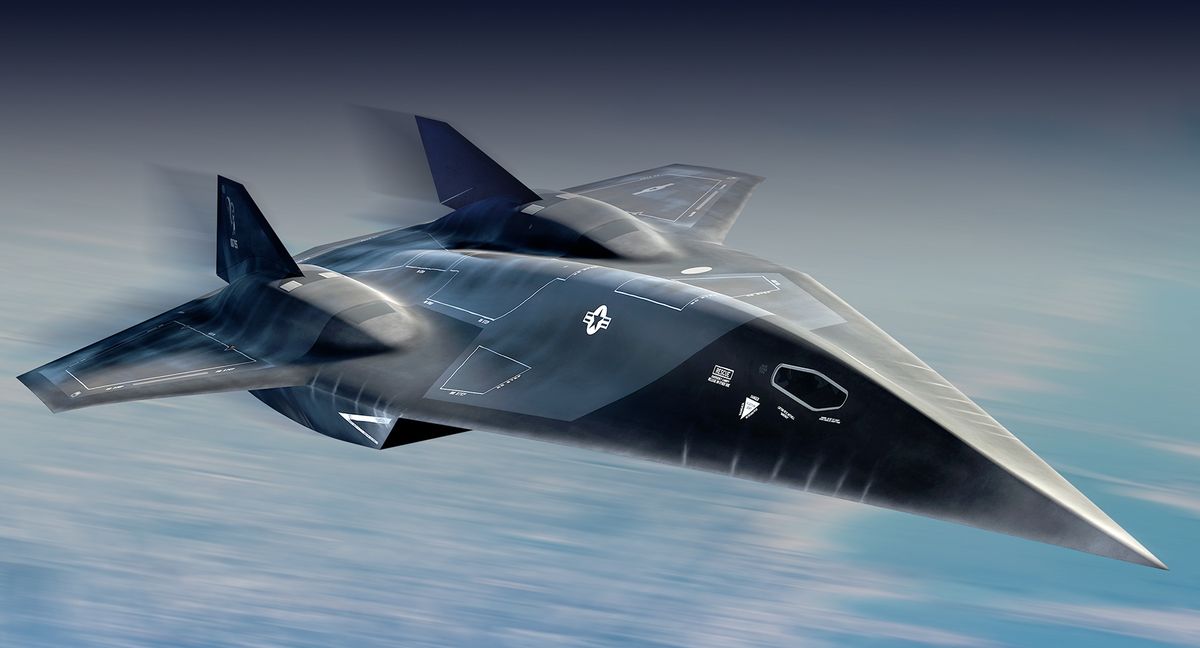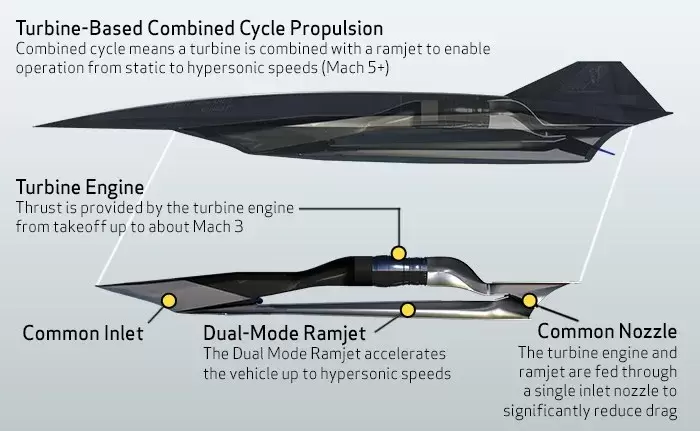|
NASA awarded a contract to Lockheed Martin to study the feasibility of building a hypersonic propulsion system for a concept intelligence, surveillance and reconnaissance (ISR) aircraft dubbed the SR-72 using existing turbine engine technologies. As explained by James C. Goodall in his book 75 years of the Lockheed Martin Skunk Works, the contract provides for a parametric design study to establish the viability of a turbine-based combined cycle (TBCC) propulsion system consisting of several combinations of near-term turbine engine solutions integrated with a very low-Mach ignition dual-mode ramjet (DMRJ) in the SR-72 vehicle concept. The SR-72 is envisioned as an unmanned, reusable hypersonic ISR and strike aircraft capable of Mach 6 flight, or nearly double the speed of its predecessor, the SR-71 Blackbird. NASA is funding the validation of a previous Lockheed study that found that speeds up to Mach 7 could be achieved with a dual-mode engine that combines turbine and ramjet technologies. Skunk Works was responsible for developing the SR-71 Blackbird, which was able to achieve Mach 3.2 with specially designed Pratt & Whitney J58 engines. The power plants were able to function as a low-speed ramjet by redirecting intake air around the engine core and into the afterburner starting at Mach 1.4 to full turboramjet from Mach 2.5 and above. Potential adversaries are working on technologies to counter USAF fighter and bomber stealth capabilities. The service sees hypersonic vehicles as the next logical step in that arms race. The USAF has a hypersonics roadmap that envisions fielding a hypersonic strike weapon, to succeed the X-51 Waverider proof-of-concept demonstration. The Waverider successfully launched from a B-52 and was powered to Mach 4.8 by a booster rocket. The X-51 then accelerated to Mach 5.1 after igniting its ramjet engine. The roadmap envisions a follow-on program calling for a reusable unmanned aircraft with Mach 6 speeds. At that speed, intelligence can be gathered or weapons delivered before enemy air defenses are even alerted. Both the Air Force Research Laboratory (AFRL) and DARPA have been after a low-speed ramjet for years. The agencies’ HTV-3X program demonstrated that a ramjet that could operate below Mach 3. That inspired Lockheed to partner with Aerojet Rocketdyne to develop a way to use off-the shelf engines like the F100 or F110 for short bursts of acceleration beyond Mach 2.2 in an attempt to close the gap between the two propulsion technologies. This study is to see if the SR-72 technology demonstrator can use existing technologies to create a dual-mode ramjet that in theory can light up at Mach 2 to 2.5. The key to this whole effort is whether they can do it and finding the required technologies so they can plan for a program in which they can develop the program as envisioned.
The problem with hypersonic propulsion has always been the gap between the highest-speed capability of a turbojet and the lowest speed of a ramjet. Most ramjets cannot achieve ignition below Mach 4. Turbine engines typically can accelerate to only Mach 2.2, below speeds at which a ramjet could take over and continue acceleration. Therefore, NASA and Lockheed must develop either a turbine engine that can accelerate to Mach 4 or a ramjet that can function at speeds within a turbine engine’s envelope. Design engineers from both Lockheed Martin and NASA are looking for a turbine-based combined system where at low speeds you have a turbine providing power, then at higher speeds a ramjet or scramjet takes over. The target is to be able to go up to Mach 7 then transition back to the turbine to land it on a runway and recover it. The problem is how you can get the vehicle to fly fast enough to ignite the DMRJ and then have the DMRJ take over. NASA is considering several existing turbofan engines for use in the project, including the Pratt & Whitney F100-PW-229 that powers both the Boeing F-15 and Lockheed Martin F-16, among other aircraft. The General Electric F414 used by the Boeing F/A-18E/F Super Hornet also is being studied, along with the supersonic turbine engine for long range (STELR) engine conceived by AFRL. If the study is successful, NASA wants to fund a demonstration program. Lockheed Martin would test the dual-mode ramjet in a flight research vehicle, and try to find solutions to issues like engine packaging and designing the thermal management system. As with all programs being developed in the late 2019/early 2020-time frame, to include the SR-72 program, canceled programs due to budget cuts and reduced manpower available to this and other critical programs under development.
0 Comments
Leave a Reply. |
Send us an email at [email protected] if you want to support this site buying the original Division of Aero Patch, only available through this website!
All
|



 RSS Feed
RSS Feed